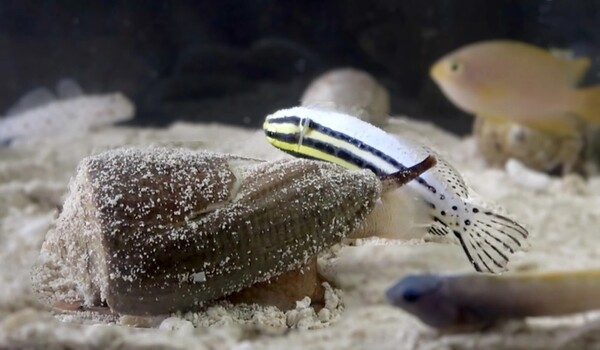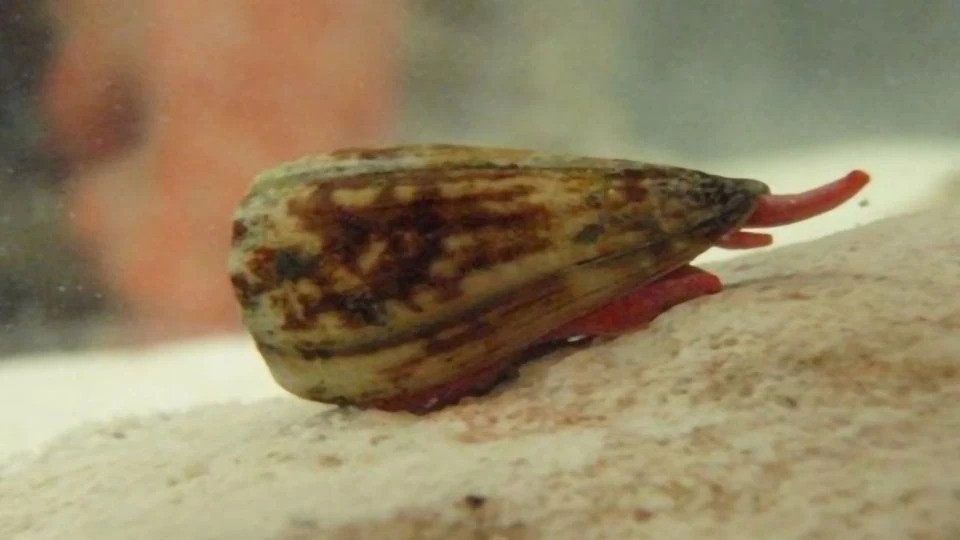Scientists are discovering clues for treating diabetes and hormone issues in an unusual source: a toxin from one of the world’s most venomous animals.
A worldwide research team lead by University of Utah scientists discovered a component in the venom of a deadly marine cone snail, the geographic cone, that mimics somatostatin, a human hormone that regulates blood sugar and other hormone levels in the body. The hormone-like toxin’s precise, long-lasting effects, which aid the snail in hunting its food, may help scientists build better medications for individuals suffering from diabetes or hormone abnormalities, both of which may be significant and often fatal.
The results published in the peer-reviewed journal Nature Communications.
Venomous animals have, through evolution, fine-tuned venom components to hit a particular target in the prey and disrupt it. If you take one individual component out of the venom mixture and look at how it disrupts normal physiology, that pathway is often really relevant in disease.
Helena Safavi
A blueprint for better drugs
The researchers’ discovery of a somatostatin-like toxin could lead to improved treatments for persons with diabetes and hormone abnormalities.
Somatostatin functions as a brake pedal for many processes in the human body, keeping blood sugar, hormones, and other essential molecules from rising too high. The researchers discovered that the cone snail toxin, known as consomatin, acts similarly, but it is more stable and specific than the human hormone, making it a possible blueprint for drug formulation.
By measuring how consomatin interacts with somatostatin’s targets in human cells in a dish, the researchers found that consomatin interacts with one of the same proteins that somatostatin does. But while somatostatin directly interacts with several proteins, consomatin only interacts with one. This fine-tuned targeting means that the cone snail toxin affects hormone levels and blood sugar levels but not the levels of many other molecules.
In fact, the cone snail toxin is more precisely targeted than the most specific synthetic drugs designed to regulate hormone levels, such as drugs that regulate growth hormone. Such drugs are an important therapy for people whose bodies overproduce growth hormone. Consomatin’s effects on blood sugar could make it dangerous to use as a therapeutic, but by studying its structure, researchers could start to design drugs for endocrine disorders that have fewer side effects.
Consomatin is more specific than top-of-the-line synthetic drugs — and it also lasts far longer in the body than the human hormone, thanks to the inclusion of an unusual amino acid that makes it difficult to break down. This is a useful feature for pharmaceutical researchers looking for ways to make drugs that will have long-lasting benefits.

Learning from cone snails
Finding better drugs by studying deadly venoms may seem unintuitive, but Helena Safavi, PhD, associate professor of biochemistry in the Spencer Fox Eccles School of Medicine (SFESOM) at the University of Utah and the senior author on the study, explains that the toxins’ lethality is often aided by pinpoint targeting of specific molecules in the victim’s body. That same precision can be extraordinarily useful when treating disease.
“Venomous animals have, through evolution, fine-tuned venom components to hit a particular target in the prey and disrupt it,” Safavi says. “If you take one individual component out of the venom mixture and look at how it disrupts normal physiology, that pathway is often really relevant in disease.” For medicinal chemists, “it’s a bit of a shortcut.”
Consomatin shares an evolutionary lineage with somatostatin, but over millions of years of evolution, the cone snail turned its own hormone into a weapon.
For the cone snail’s fishy prey, consomatin’s deadly effects hinge on its ability to prevent blood sugar levels from rising. And importantly, consomatin doesn’t work alone. Safavi’s team had previously found that cone snail venom includes another toxin which resembles insulin, lowering the level of blood sugar so quickly that the cone snail’s prey becomes nonresponsive. Then, consomatin keeps blood sugar levels from recovering.
“We believe the cone snail developed this highly selective toxin to work with the insulin-like toxin to bring blood glucose to a very low level,” explains Ho Yan Yeung, PhD, a postdoctoral researcher in biochemistry at SFESOM and the study’s primary author.
The fact that numerous components of the cone snail’s venom target blood sugar regulation suggests that the venom may contain many other compounds that perform similar functions. “It means that there might not only be insulin and somatostatin-like toxins in the venom,” Yeung speculates. “There could potentially be other toxins that have glucose-regulating properties too.” Such toxins could be exploited to develop more effective diabetes medicines.
















